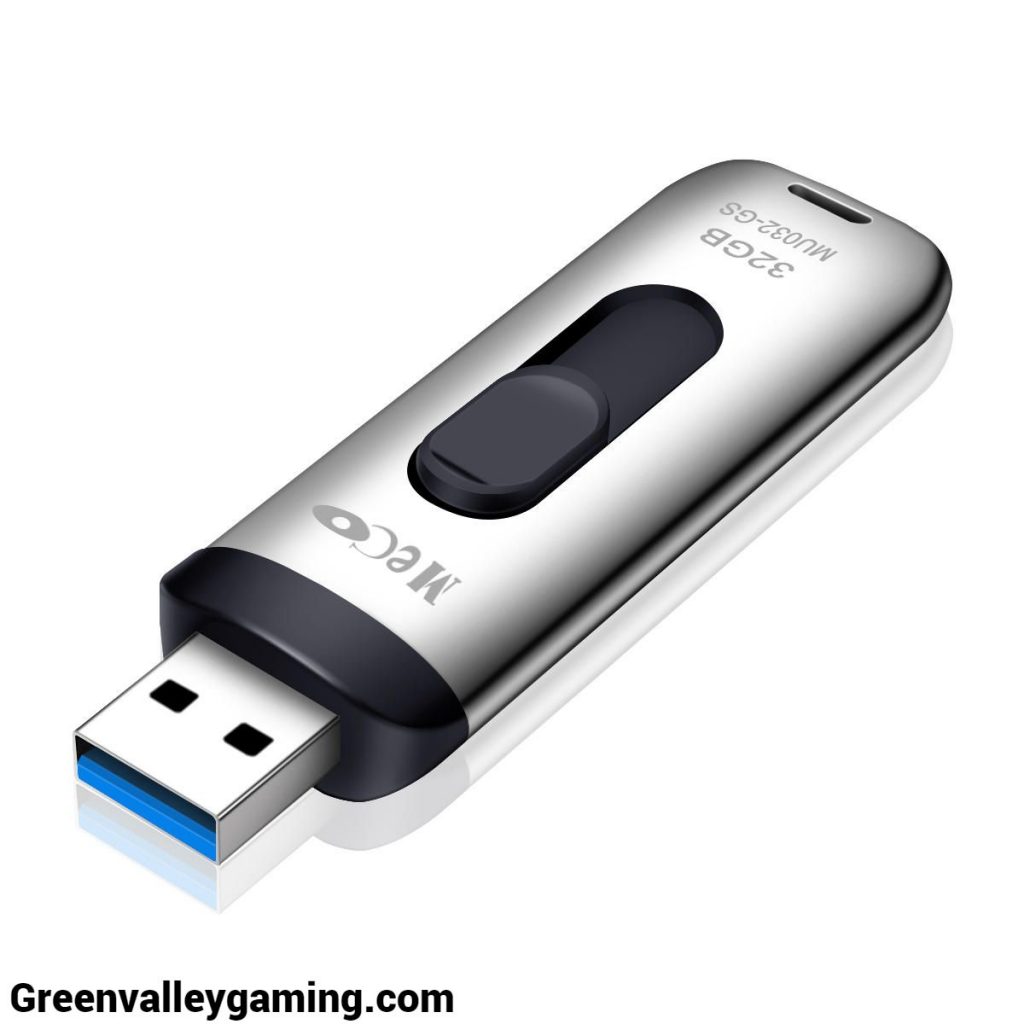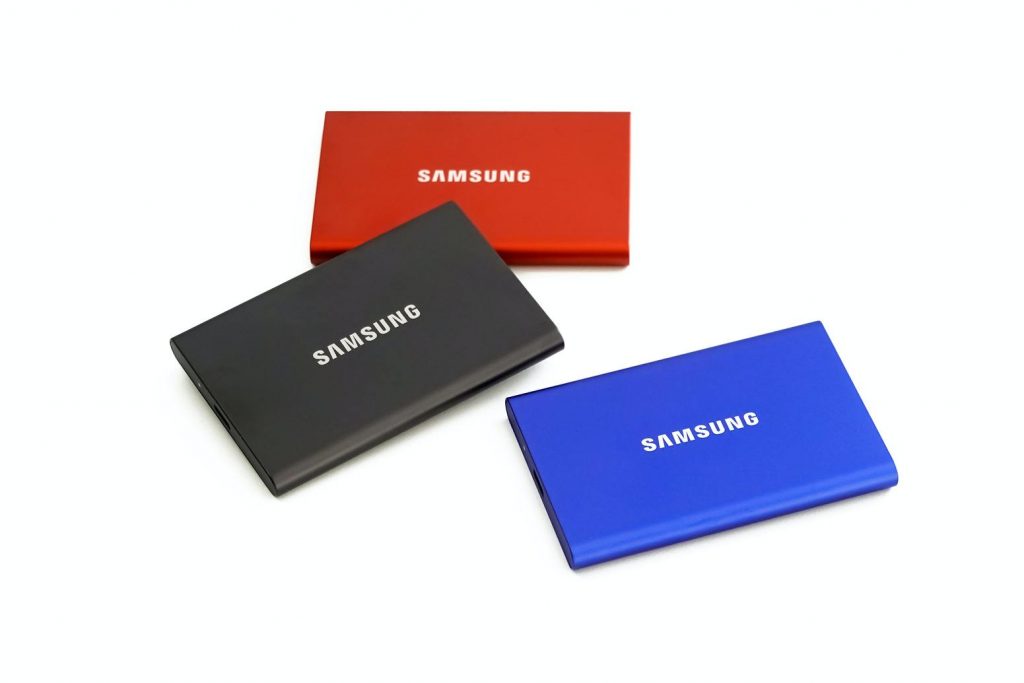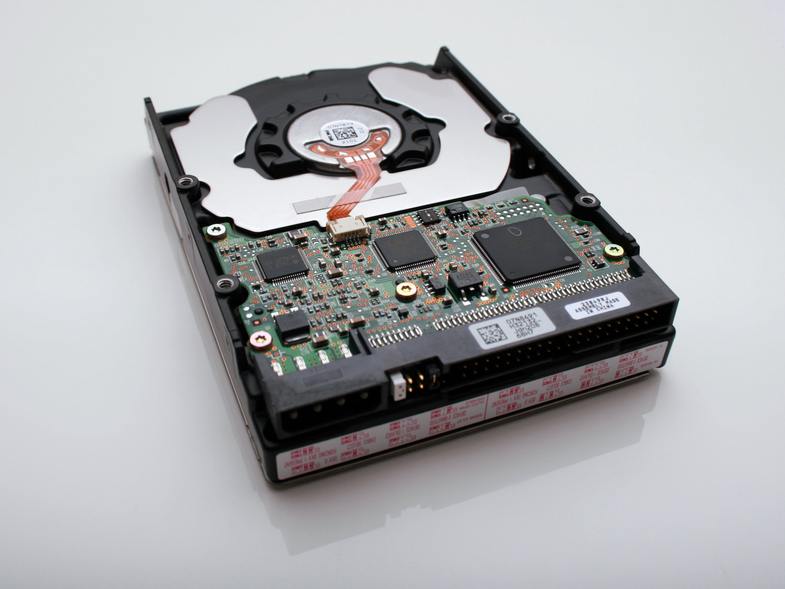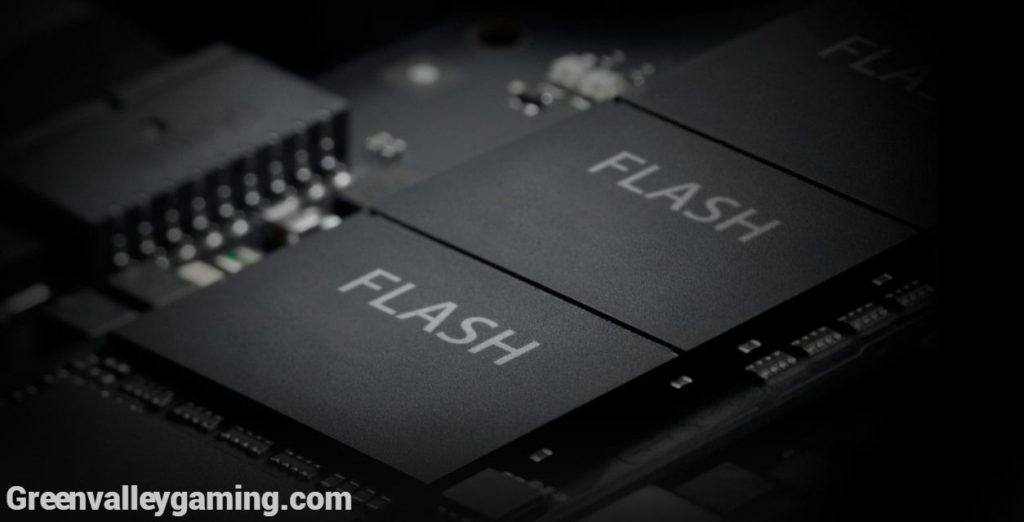If you’re searching for “SSD solid-state drive vs USB flash drive” then we’re going to discuss the difference between flash storage and SSD.
SSDs are becoming more popular, but what are they and how do they differ from USB flash drives? In recent years, USB flash drives have largely replaced CDs and DVDs as the preferred means of transferring files from one computer to another. They are small, fast, and relatively inexpensive. But there is a new storage technology that is quickly gaining favor among computer users: the solid-state drive, or SSD. An SSD is essentially a flash memory device that connects to a computer via either USB or SATA.
SSD vs USB flash drive
We will compare the following features in order to know the exact differences.
Capacity
USB flash drives typically have a much lower capacity than SSDs. While flash drives start at 2GB and go up to 64GB, the largest available SSDs are 1TB.
Durability
Flash drives are typically less durable than SSDs. In addition to being more vulnerable to physical damage, flash memory has a finite lifespan, which means it will eventually wear down.
Performance
SSDs are much faster than flash drives. Flash drives typically have a read/write speed of 20-40 MB/s, while SSDs can reach up to 500MB/s.
Reliability
SSDs are more reliable than flash drives. SSDs have no moving parts, so they do not run the risk of being damaged by the shock and vibrations that can occur in a laptop bag. This makes SSDs much better suited to travel with than flash drives. Security: SSDs are more secure than flash drives.
Speed
The speed of an SSD is much faster than a USB flash drive. However, this will depend on the size of the SSD. A small 2GB drive will not be as fast as a large 1TB drive. The speed of a USB flash drive is also dependent on the USB connection. A USB 3.0 flash drive will be much faster than a USB 2.0 flash drive.
Power consumption
The power consumption of an SSD is much lower than a USB flash drive. The power consumption of a USB flash drive is also dependent on the USB connection. A USB 3.0 flash drive will be much faster than a USB 2.0 flash drive.
Dependability
Both the USB flash drive and an SSD are very dependable. The USB flash drive is more dependable because if there is a problem, you can always connect it to another computer. The SSD will not work on other computers unless it is formatted with the right drivers. The only thing you can do with an SSD if there is a problem is to try and format it.
Storage
USB flash drives are limited in terms of storage size, but they are very cheap. You can get a 16 GB USB flash drive for as little as $8.
Durability
SSDs are more durable than USB flash drives. There are no moving parts, so there is nothing that can break. The USB flash drive has a plastic cover and a metal case inside. The metal case can wear out over time, but the plastic cover does not wear out as much.
Materials
Most USB flash drives are made from aluminum Comparison: SSDs are more expensive than USB flash drives, but they also have a lot of benefits. The main benefit is that SSDs are more durable than USB flash drives. They do not use moving parts, so there is nothing that can break inside. or plastic. The exterior shell is plastic. Aluminum is used for the interior of the USB flash drive.
Price
SSDs are more expensive than USB flash drives. A 500 GB SSD costs around $120 while a 16 GB USB flash drive costs around $10.
CHECKOUT: LATEST PUBLISH ABOUT GAMING KEYBOARD
The differences between USB flash and SSD and HDD and Apple’s flat and NAND storage
When discussing computer storage capabilities the terms flash storage and SSD are used quite commonly you might be wondering if these terms are interchangeable or are they different types of storage.
Even computer experts tend to use these terms in place of one another but SSD storage and flash storage are technically different. SSD storage is made up of mostly flash storage but it has additional components and capabilities to make the discussion more confusing.
However, there are also SSDs made without the use of flash storage thus it is probably easiest to answer this question with the description.
What is flash storage?

Flash storage is commonly used and it is made from silicon chips. Information can be written on these chips in a race to be electrical input from a computer or phone. It is faster than any other type of storage mainly because it doesn’t utilize moving parts. Flash storage can also keep information stored even without a continuous supply of power, unlike the RAM on a computer.
Finally, flash storage can be rewritten and overridden hundreds of times with no consequences. Anyone who has tried to rewrite a CD knows that this is not the case with all types of storage.
What is SSD storage?

An SSD conversely is a storage device, not a storage medium usually SSDs are added to a computer and can be upgraded or replaced aftermarket.
Many SSDs are made with flash storage SSD stands for a solid-state drive. Flash storage doesn’t have any moving parts hence this is where the solid title comes from. In most cases, SSDs utilize a combination of flash storage and another medium as this has proven an effective way to add storage to a computer.
- NEXT-LEVEL SSD PERFORMANCE: Unleash the power of Samsung 980 PRO PCIe 4.0 NVMe SSD for next-level computing
- MAXIMUM SPEED: 980 PRO is raising the bar for NVMe SSDs. 980 PRO is backward compatible with PCIe 3.0. Sequential performances (up to)- 3500MB/s for reads, 3400MB/s (500GB) for writes. Random (up to)- 690K IOPS (500GB/1TB) for reads, 620K (250/500GB) for writes
- A WINNING COMBINATION: Designed for hardcore gamers and tech-savvy users, the 980 PRO offers high-performance bandwidth and throughput for heavy-duty applications in gaming, graphics, data analytics, and more
- Get into the game fast as you zoom past load times with blazing speeds of up to 5,150MB/s(1) (1TB and 2TB models).date transfer rate:5150.0 megabytes_per_second.Specific uses: Gaming
- Equipped with a PCIe Gen4 interface(4), the WD_BLACK SN770 NVMe SSD helps fuel in-game responsiveness, minimize stutter, and provide smooth streaming for a performance boost you can see and feel.
- Get tons of space for your latest games, future updates, and downloadable content with capacities up to 2TB(2).
- 3D NAND smart upgrade option for gaming
- Enhanced performance for seamless cutscenes
- Smart optimization to ensure reliable performance
- MEET THE NEXT GEN: Consider this a cheat code; Our Samsung 990 PRO Gen4 SSD helps you reach near max performance with lightning-fast speeds; Whether you’re a hardcore gamer or a tech guru, you’ll get power efficiency built for the final boss
- REACH THE NEXT LEVEL: Gen4 steps up with faster transfer speeds and high-performance bandwidth; With a more than 55% improvement in random performance compared to 980 PRO, it’s here for heavy computing and faster loading
- THE FASTEST SSD FROM THE WORLD'S FLASH MEMORY BRAND: The speed you need for any occasion; With read and write speeds up to 7450/6900 MB/s you’ll reach near max performance of PCIe 4.0 powering through for any use
- THE SSD ALL-STAR: The latest 870 EVO has indisputable performance, reliability and compatibility built upon Samsung's pioneering technology. S.M.A.R.T. Support: Yes
- EXCELLENCE IN PERFORMANCE: Enjoy professional level SSD performance which maximizes the SATA interface limit to 560 530 MB/s sequential speeds,* accelerates write speeds and maintains long term high performance with a larger variable buffer, Designed for gamers and professionals to handle heavy workloads of high-end PCs, workstations and NAS
- INDUSTRY-DEFINING RELIABILITY: Meet the demands of every task — from everyday computing to 8K video processing, with up to 600 TBW** under a 5-year limited warranty***
- GO THE DISTANCE: Withstand whatever adventure with the wildly reliable T7 Shield; It’s designed for the elements with water1, dust2 and drop3 resistance—all, of course, at lightning speeds
- YOUR CONTENT CAPTURED: Take on the project, then transfer all your heavy files within seconds with the USB 3.2 Gen 2 Portable Solid-State Drive; Compatible with PC, Mac, Android devices, gaming consoles and more
- SHARE IDEAS IN A FLASH: The T7 is embedded with PCIe NVME technology that brings you fast read and write speeds up to 1,050/1,000 MB/s4, making it almost twice as fast as the T5
- Customize your drive’s RGB lighting with the downloadable WD_BLACK Dashboard (Windows only) to show off your style and make every play personal.
- Kick loading into overdrive with a USB 3.2 Gen2x2 interface and speeds up to 2,000MB/s. (Based on read speed. 1 MB/s = 1 million bytes per second. Based on internal testing; performance may vary depending upon host device, usage conditions, drive capacity, and other factors.)
- Compatible with PlayStation 5 and Xbox Series X|S consoles. {Compatible with PlayStation 4 Pro or PS4 with system software version 4.50 or higher, PlayStation 5 (Play and store PS4 games; archive PS5 games), Xbox One, and Xbox Series X|S (Play and store Xbox One games; archive Xbox Series X|S games).}
- Get the ultimate gaming edge over your competition with insane speeds up to 7,300 MB/s(1) for top-level performance and radically short load times.date transfer rate:7300.0 megabytes_per_second.Specific uses: Gaming
- A range of capacities from 1TB to 4TB(2) means you get to keep more of today’s games that can take up 200GB(2) or more of storage.
- The WD_BLACK Dashboard monitors your drive’s health, controls your RGB style and can automatically detect games to turn on Game Mode 2.0 (Windows only).
What is HDD storage?

SSDs often get confused with HDDs usually due to the similar-sounding name HD DS or hard disk drives are another type of computer storage. They store information on moving disks and are the oldest storage method for most computers.
Other technology apart from the fan you can often hear these disks spinning when you turn on a computer. While HDDs work well to a point their moving parts subject them to a significant amount of complication they are still used in some cases because they can store a significant amount of information but they aren’t as widespread as SSDs with flash.
What is Apple flat storage?

Apple flat storage is the same as SSD. This is another common question that comes up when discussing storage, Apple specifically is mentioned because unlike PC the company doesn’t always provide the full technical information for their product.
On most Apple computers the flash storage is connected directly to the motherboard at the time of production. This is flash storage utilization, not SSD because SSDs are connected in a removable fashion.
whereas integrated flash storage does not improve performance for Apple computers but makes them impossible to upgrade once they become older.
- LEAN. MEAN. M3 MACHINE — With a powerful 8-core CPU and up to 10-core GPU, the blazing-fast MacBook Air with M3 chip is a superportable laptop that sails through work and play.
- BUILT FOR APPLE INTELLIGENCE — Apple Intelligence helps you write, express yourself, and get things done effortlessly. It draws on your personal context while setting a brand-new standard for privacy in AI. Coming in beta this fall.
- PORTABLE DESIGN — Lightweight and under half an inch thin, so you can take MacBook Air anywhere you go.
- LEAN. MEAN. M3 MACHINE — With a powerful 8-core CPU and 10-core GPU, the blazing-fast MacBook Air with M3 chip is a superportable laptop that sails through work and play.
- BUILT FOR APPLE INTELLIGENCE — Apple Intelligence helps you write, express yourself, and get things done effortlessly. It draws on your personal context while setting a brand-new standard for privacy in AI. Coming in beta this fall.
- PORTABLE DESIGN — Lightweight and under half an inch thin, so you can take MacBook Air anywhere you go.
- SUPERCHARGED BY M3 — With an 8-core CPU and 10-core GPU, the Apple M3 chip can help you blaze through everyday multitasking and take on pro projects like editing thousands of photos or 4K video.
- BUILT FOR APPLE INTELLIGENCE — Apple Intelligence helps you write, express yourself, and get things done effortlessly. It draws on your personal context while setting a brand-new standard for privacy in AI. Apple Intelligence will be available in beta on Mac with M1 and later, with Siri and device language set to U.S. English, as part of macOS Sequoia this fall.
- UP TO 22 HOURS OF BATTERY LIFE — Go all day thanks to the power-efficient design of Apple silicon. The MacBook Pro laptop delivers the same exceptional performance whether it’s running on battery or plugged in. (Battery life varies by use and configuration. See apple.com/batteries for more information.)
- STRIKINGLY THIN DESIGN — The redesigned MacBook Air is more portable than ever and weighs just 2.7 pounds. It’s the incredibly capable laptop that lets you work, play or create just about anything — anywhere.
- SUPERCHARGED BY M2 — Get more done faster with a next-generation 8-core CPU, up to 10-core GPU and up to 24GB of unified memory.
- BUILT FOR APPLE INTELLIGENCE — Apple Intelligence helps you write, express yourself, and get things done effortlessly. It draws on your personal context while setting a brand-new standard for privacy in AI. Apple Intelligence will be available in beta on Mac with M1 and later, with Siri and device language set to U.S. English, as part of macOS Sequoia this fall.
- SUPERCHARGED BY M3 — With an 8-core CPU and 10-core GPU, the Apple M3 chip can help you blaze through everyday multitasking and take on pro projects like editing thousands of photos or 4K video.
- BUILT FOR APPLE INTELLIGENCE — Apple Intelligence helps you write, express yourself, and get things done effortlessly. It draws on your personal context while setting a brand-new standard for privacy in AI. Apple Intelligence will be available in beta on Mac with M1 and later, with Siri and device language set to U.S. English, as part of macOS Sequoia this fall.
- UP TO 22 HOURS OF BATTERY LIFE — Go all day thanks to the power-efficient design of Apple silicon. The MacBook Pro laptop delivers the same exceptional performance whether it’s running on battery or plugged in. (Battery life varies by use and configuration. See apple.com/batteries for more information.)
What is NAND Flash storage?

If you have been researching storage methods you may have heard or read about something called NAND. Easy to understand terms NAND is a form of flash storage.
It is common in removable USB drives as well as in SSDs. NAND specifically refers to a certain method of cell organization that is used to store the data that it’s written on only recently has NAND technology. It is affordable enough to be used on SSDs as much more memory is required in its application than a USB Drive. however, it is limited in the amount of Grier.
FAQ’S
Can I use a flash drive as an external hard drive?
You can use a flash drive instead of an external drive, but you may not want to. Due to the fact that a flash drive is not designed to read and write data over and over again, it will degrade much faster than an external hard drive. In the short term, flash drives might seem attractive, but under normal conditions, they will fail you faster than external drives. The drives are also slower than high-end spinning drives and solid-state drives.
A flash drive can last for a very long time if you only read files from it and do not write to it. Your flash drive might last a very long time if you only use it to transport movies or music. To expand storage for a computer or a console, an external hard drive is the best option.
What are the uses of Solid-state flash memory?
Computers and mobile devices use flash memory as the primary storage technology in recent years. Solid-state drives (SSDs) with NAND flash memory are widely used as secondary memory in modern computing systems due to their superior performance over magnetic hard disk drives (HDDs).
Conclusion
Many computer experts agree that flash storage devices are the best form of storage because they last longer than a flash drive and are faster than most SSDs.
This is an odd comparison however because flash storage is a more specific type of SSD that uses only one form of storage. when well-maintained flash storage can last for a Shockley long time unlike NAND and USB drives, which have an estimated limit of three years with heavy usage.
While there is a massive jump in cost between flash storage and SSDs, the performance increase is well worth it for users with a need for it.












